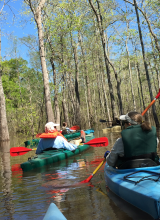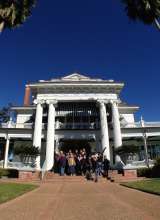Beaumont got its big start more than 150 years ago when the area became a center for cattle raisers and farmers. It was named after Mary Dewburleigh Barlace Warren Beaumont, the wife of businessman Henry Millard. Beaumont officially became a town on December 16, 1838 and became an important lumber and rice-milling town in the late 1800s. Beaumont's location along the Neches River enabled the city to become and active port town, that capitalized on the lumber boom in the late 19th century that led to helping rebuild the railroads after the Civil War. The terrain allowed rice crops to flourish, leading to the first commercial rice mill in Texas situated in Beaumont.
But neither lumber or rice is what put Beaumont on the map.
On January 10, 1901, the Lucas Gusher on Spindletop Hill exploded, shooting oil hundreds of feet in the air. The explosion was so intense that nine days later the oil column was still gushing nearly 200 feet high, producing around 100,000 barrels a day! The Lucas Gusher dramatically displayed the natural resource that lay below Beaumont. Over the next few years, dozens of oil companies were chartered. Six wells were erected on Spindletop Hill, helping make the U.S. the world's leading petroleum-producing nation. Spindletop became the first major oil field and the largest in American history, ushering in the Petroleum Age.
This January 11, 2020, visitors took a walk back in time to the wildcatter days during the Spindletop / Gladys City Boomtown Museum's annual anniversary event. The celebration featured visitor favorites, including blacksmithing and printing demonstration, contests, door prizes and children's activities. And, of course, an anniversary celebration would not be complete without blowing the replica gusher!
The big event takes place each year to mark the historic anniversary, so mark your calendar for 2021's booming celebration.









